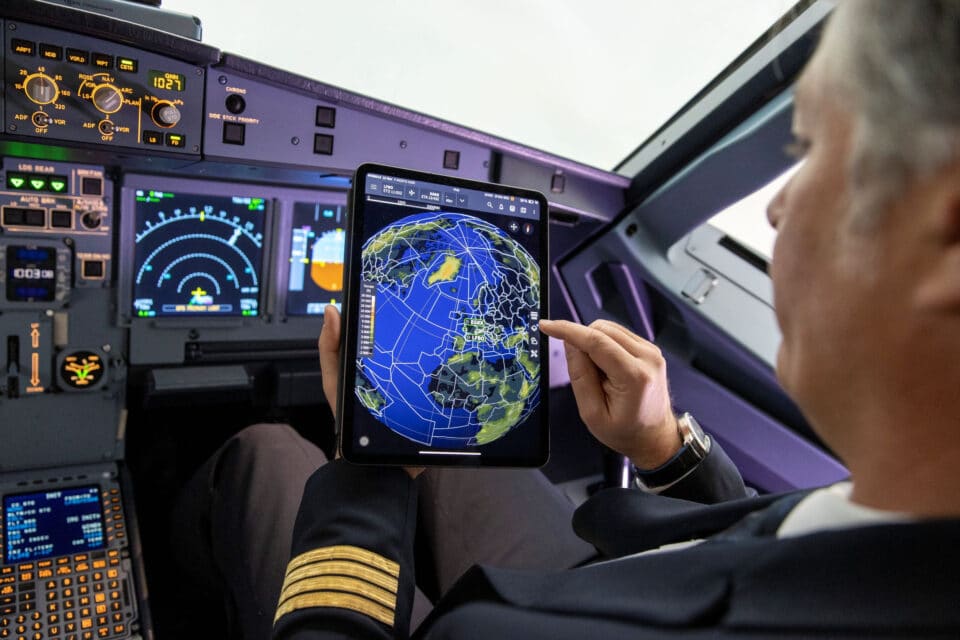Tech
Airbus launches Mission+, the first Electronic Flight Assistant that maximises flight efficiency

Dubai, 16 November 2021 – Airbus’ Flight Operations subsidiary NAVBLUE has launched Mission+, the first Electronic Flight Assistant (EFA) that provides pilots with all the data and information that they need to perform their mission, via one modular digital solution.
This mission-centric approach integrates flight management data and documentation, cockpit check-list, navigation charts and airport maps, real time weather conditions, aircraft performance data – usually only available to pilots via multiple sources.
“For us pilots, the user experience offered here compares with moving from an old mobile phone and paper diary to the latest generation smartphone,” said Airbus Pilot Captain Olivier Aspe.
Accessible through an interactive display, Mission+ is the first EFA on the market to gather all information sources together with one single point of entry. For pilots this means an integrated interface that allows quick, easy and seamless navigation.
Ka-226T Climber will make its international debut at Dubai Airshow 2021
In compiling data and information in this way, Mission+ is a significant upgrade from the current, widely used Electronic Flight Bags (EFBs) and paper on-board cockpits. Pilot workload is optimised and the overall operational efficiency for the airline is improved.
Airbus delivers first of 60 A220s to Air France
Mission+ has been developed in close cooperation with airlines from various regions around the world, incorporating their feedback. The solution ensures a flexible platform with optional modules that can be customised to airline specific requirements.

Tech
Scientists Create Drone with Fiber Optic “Nervous System” for Smarter Flight

Technology is advancing rapidly, with scientists constantly pushing boundaries. Now, researchers from Southampton have developed a unique drone equipped with its own “nervous system.”
This breakthrough allows the drone to process information and respond to its surroundings more like a living creature, making it faster and more adaptable than ever before.
China Set to Debut New J-35A Stealth Fighter at Zhuhai Airshow
Scientists at the University of Southampton have pioneered a groundbreaking development in drone technology by equipping a drone with its very own “nervous system.” This innovative system, made of fiber optics, enables the drone to function with greater autonomy and efficiency.
Unlike traditional drones, this technology allows the drone to operate for longer periods without needing frequent stops for manual inspections, drastically improving its operational capabilities.
Comparison of the Indian built Tejas MK1A vs South korean FA 50
Developed by Dr. Chris Holmes and Dr. Martynas Beresna from Southampton’s Optoelectronics Research Centre, the drone’s “nervous system” works by using optical fibers to monitor its condition in real-time.
These fibers detect stress and potential faults, sending data back to the ground team, allowing them to spot issues without interrupting the drone’s flight. The system uses a process called optical speckle, which projects images to assess the drone’s status, all while being supported by AI algorithms that interpret these signals for the ground crew.
Initially designed to deliver life-saving equipment like defibrillators in emergencies, this technology has shown promise in enhancing the drone’s longevity and reducing the need for extensive ground crew involvement.
This is especially crucial as the drone industry is projected to contribute up to £45 billion to the global economy by 2030, particularly in sectors like logistics and transportation. The University of Southampton’s team believes that the new system will revolutionize drone operations, making them more reliable, safer, and cost-effective for commercial use.
The technology, which has already been successfully tested on a drone developed by university undergraduates, is set to be commercialized by 2025, with the university’s Future Worlds acceleration programme providing vital support for its development.
-

 Aviation2 months ago
Aviation2 months agoBoeing confirms 797: A New Era for Mid-Size Aircraft
-

 Aviation2 months ago
Aviation2 months agoMicrosoft Flight Simulator Raises $3 Million to Bring Back the An-225 Mriya
-

 Aviation2 months ago
Aviation2 months agoLockheed and Tata Team Up to Build C-130J MRO Facility in India
-

 Airlines2 months ago
Airlines2 months agoQantas Engineers Stage Walkout Over Cost of Living Concerns
-

 Airlines2 months ago
Airlines2 months agoQatar Citizens Can Travel to the United States Without a Visa
-

 Aviation2 months ago
Aviation2 months agoBoeing Offers 25% Pay Increase & Promise to Build Next Plane in Seattle
-

 Aviation2 months ago
Aviation2 months agoQatar Airways bans these new Electronic Devices on plane
-

 Airlines2 months ago
Airlines2 months agoEmirates Ends 28-Year Singapore-Melbourne Fifth Freedom Route








